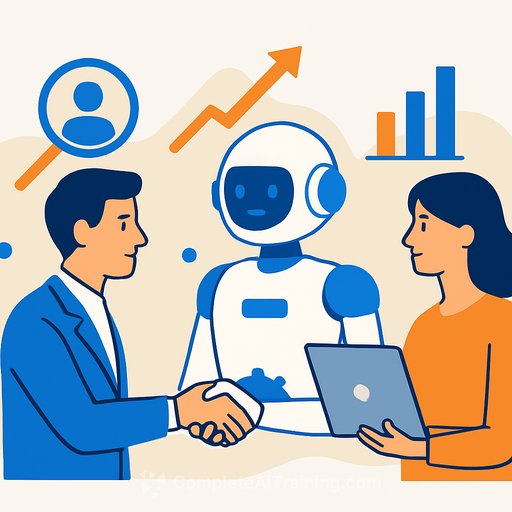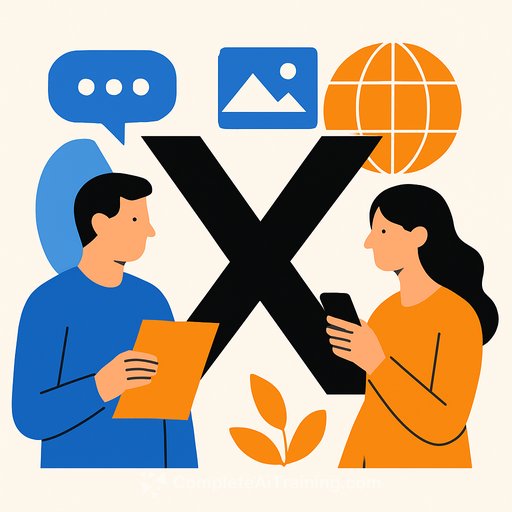The HiPo Playbook Is Being Rewritten by AI - Without Losing the Human
High-potential identification is shifting from tenure and titles to learning speed, AI-collaboration fluency, and the ability to rethink work. The common thread: AI surfaces signals people miss, while people still make the final call. If you lead HR, this is your moment to level up how you discover, develop, and keep future leaders.
What HR leaders are seeing on the ground
- Zensar used an internal AI hackathon to spotlight creative problem-solvers the business hadn't fully seen. HR treated it as a discovery engine for future-ready talent, not a side project.
- At Innovaccer, HiPo identification is a human-machine partnership. Their models are 15-20% more accurate at predicting retention of HiPos on cross-functional AI projects, and AI "flight simulators" cut time-to-competency by nearly 40%.
- IIFL Finance reports AI-led talent analytics, personalised learning, and an AI helpdesk improved HR response efficiency by 25%, with 60% of functions already using AI tools. The focus: mindset, ownership, and courage to build with technology.
- EY leaders expect core HiPo traits to include AI fluency and Human-AI orchestration, moving from annual reviews to in-the-flow-of-work assessment. Caution: decisions are only as good as the quality of your workforce data.
- Raymond Group is weighting KPIs, leadership competencies, and future-focused AI skills equally now, with a stronger tilt to AI competencies next year.
- Simplilearn's HiPo framework balances 75% traditional performance with 25% future readiness: AI collaboration, data fluency, and experimentation.
- Ericsson's stance: empathy, inclusion, and collaboration still define great leadership. GenAI expands what counts as potential, and platforms like Degreed and Career Hub help employees prove progress. People still make the final decision.
The new HiPo signals to track
- Learning velocity: how quickly someone closes skill gaps and applies new knowledge.
- AI-collaboration fluency: using AI to think, build, and ship work faster and better.
- Problem reframing: reimagining processes and products with data and automation.
- Data fluency: reading, questioning, and acting on analytics in daily work.
- Cross-functional impact: outcomes on AI-enabled projects across teams.
- Adaptability: smooth shifts into AI-driven workflows and tools.
Build a Human+AI HiPo system in 90 days
- Days 0-30: Foundation
Define a simple HiPo rubric: 75% current performance, 25% future readiness (AI collaboration, learning pace, experimentation). Map data sources: performance reviews, project outcomes, learning systems, internal mobility, and collaboration signals. - Days 31-60: Signals in the flow of work
Stand up skill tracking via your LMS/LXP and project systems. Pilot AI-aided assessments on a few teams. Add short, scenario-based AI tasks ("flight sim" challenges) for key roles and log outcomes. - Days 61-90: Decisions and guardrails
Set a weekly HiPo review where managers and HR validate AI suggestions. Add flags for bias, missing data, and overreliance on single metrics. Document promotion and succession decisions with human rationale.
Metrics that matter
- Time-to-competency for priority roles.
- Retention risk for HiPos and interventions taken.
- Internal mobility into AI-heavy projects and roles.
- Skill progression over 30/60/90 days in your learning platform.
- Manager calibration accuracy vs. AI suggestions over time.
Guardrails you need
- Data quality: keep people data clean, complete, and consistently defined across systems.
- Bias checks: compare outcomes by gender, location, tenure, and function; adjust models and rubrics where needed.
- Transparency: show employees what signals matter and how to improve them.
- Human override: require a documented human decision for promotions and succession moves.
- Governance: align with an AI risk framework such as the NIST AI RMF.
Your practical stack (lean and useful)
- LXP/LMS for skill visibility (e.g., Degreed), plus your Career Hub for internal gigs.
- Project and code/product analytics for in-the-flow outcomes.
- Lightweight AI models for signal scoring and retention predictions, reviewed monthly by HR analytics.
- "Flight simulator" scenarios to test applied judgment, not just course completions.
Templates you can adopt
- HiPo Scorecard
Performance (75%): OKRs, peer feedback, outcome metrics.
Future readiness (25%): AI collaboration score, learning velocity, experimentation index. - Promotion packet
3 data-backed wins, 2 cross-functional impacts, 1 "reimagine the process" story, manager narrative, HR check, final committee decision.
Upskill the whole system
Give managers a simple playbook for AI-enabled coaching and project design. Give employees clear pathways to build AI fluency and prove it in real work.
- Explore role-based AI learning paths: Courses by job
- Track fresh, practical programs for HR and business teams: Latest AI courses
The bottom line
AI is expanding your field of view. The leaders you'll want tomorrow are the fast learners who work with AI to create better outcomes today. Keep the human judgment, upgrade the signals, and make HiPo development a daily habit-inside the work, not just at year-end reviews.
Your membership also unlocks:






